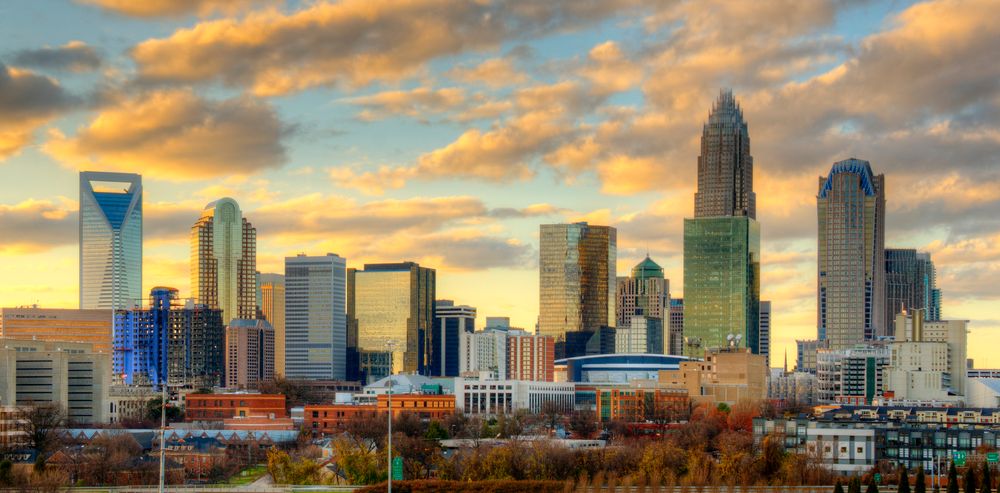Written By Lexx Thornton
With a solid economy, a world-class workforce, and a wealth of corporate hospitality, NorthCarolina is America’s Top State for Business in 2025. The Tar Heel State is on a roll. It captured top honors in the annual CNBC rankings in 2022 and 2023, and it was runner-up in 2021 and 2024—missing the top spot last year by just three points to Virginia, which slips this year to its lowest position among states since 2018.
“North Carolina offers the ideal combination of talent, infrastructure, and forward-thinking leadership to support our mission to reshape aviation,” said Tom O’Leary, CEO and co-founder of JetZero, an aviation startup manufacturing fuel-efficient airliners, which announced June 12 that it will build its first factory, with 14,500 jobs, in Greensboro.
Also in June, Amazon announced it would invest $10 billion to build new data centers in NorthCarolina, on top of the $12 billion the company says it has invested in the state since 2010.
“This latest expansion is a testament to the state’s thriving business ecosystem and talented workforce,” the company said in a statement June 4.
North Carolina finishes No. 3 in the all-important Economy category of this year’s study, behind only Florida and Texas. The state’s gross domestic product grew by a healthy 3.7% last year, the fifth-strongest in the country. The state added more than 60,000 jobs last year.
According to Census data, North Carolina finishes third—behind Florida and Maine—in net in-migration of college-educated workers on a percentage basis. North Carolina finishes in the top tier both for science, technology, engineering and math, or STEM, employees, and for its pipeline of vocational and career-educated workers.
While no state is more politically divided than deep purple North Carolina, both parties seem to agree on the importance of keeping business happy.
“In recent years, we’ve recruited businesses that have created tens of thousands of jobs across the state,” Gov. Josh Stein, a Democrat in his first year in office, said in his state of the state address in March. “But we cannot rest on our laurels. Other states want what we have here—it’s a competitive world.”
Governor Josh Stein noted in an interview that since January of this year, when he was sworn in, the state has announced more than $20 billion worth of investments that include 23,000 jobs.
Texas is the runner-up in this year’s rankings, with the top rating in the Workforce category. The Lone Star State is unparalleled in attracting workers. However, Texas has serious Quality of Life issues, finishing No. 49 in the category. The state has the largest percentage of people without health insurance, crime is on the high side, and state laws offer few protections against discrimination.
Florida climbs to third place this year, with the top rating in Economy for the third consecutive year. But the state’s strong growth and its lingering insurance crisis are forcing up costs. The Sunshine State is now third-highest in Cost of Living.
Virginia, which has run neck-and-neck withNorth Carolina since 2021 for the top spot in CNBC’s rankings, slips to fourth place this year. The Old Dominion is still a business powerhouse, tops for Education, and second best for Infrastructure. But the state’s interdependence on the federal government—an economic boost in most years—leaves its economy on less solid footing as federal budget cuts loom.
Ohio joins the top five states for the first time with America’s top ranking in Infrastructure. More than 142 million people live within a day’s drive of Ohio, more than any other state. TheBuckeye State also offers the second-lowest cost of doing business, after Oklahoma.
This year’s Most Improved State is Massachusetts, which climbs 18 spots to No. 20 overall, bouncing back from the biggest decline last year. The Bay State still has serious issues. It’s the second-most-expensive state to do business in. And cuts in federal research dollars—not just to Harvard University, but also to other institutions in the state—seriously threaten the state’s heritage of innovation. But overall, Massachusetts is less dependent on Washington than most states.
The Center on Budget and Policy Priorities estimates that federal funds comprise just 30% of state spending in Massachusetts. That is the 14th-lowestpercentage among states, helping thestate in the crucial Economy category



